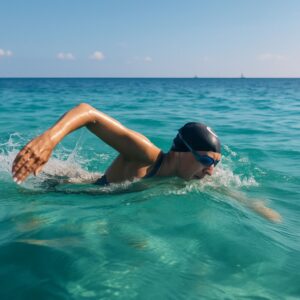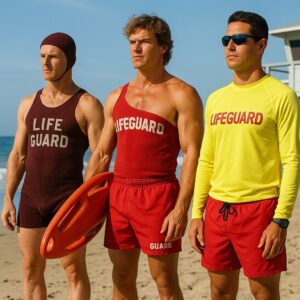
There’s a moment on every summer shoreline when the wind drops, the water inhales, and the sun hovers just above the horizon like a held note. Photographers call it golden hour, but the name undersells what it does to a person’s confidence: light softens, edges warm, and even the shyest among us feels a little braver. It’s an ideal time to make images in swimwear, and also a dangerous time—because the same glow that flatters can tempt us to forget that the person in the frame is a person first. “Bikini photo shoots done right” is not a mood board; it’s a philosophy. It’s the decision to treat the body not as material but as meaning, to invite collaboration rather than extract compliance, to design a shoot where dignity is built into the logistics and creativity grows out of trust. This essay is a road map for photographers, influencers, brand creatives, and hobbyists who love summer aesthetics and want to do them humanely. It’s a long walk—from first message to final edit—because respect is not a filter you add in post. It’s a workflow.
Before you even think about locations or lenses, begin with values. Say them out loud, write them down, put them into your call sheet: consent-centered, adult-only, inclusive, culturally respectful, environmentally gentle, safety-forward, no sexualization, no diet talk, no retouching that rewrites bodies. If that sounds like an HR policy rather than a creative brief, good—because the most liberating shoots are the ones where boundaries are explicit. When every collaborator knows the rules, they can play inside them with confidence. Share those values in your initial outreach: “I’m planning an empowerment-focused swimwear portrait session for adults (18+). Poses will remain natural and non-sexualized. You’ll help craft the concepts, approve wardrobe, and choose the images that get shared.” That one paragraph reframes the entire enterprise from “I take” to “we make.” It also pre-screens for the right fit. People who only want spectacle drift away; people who want to be seen—not displayed—lean in.
Next comes consent, which isn’t a single yes—it’s a rolling conversation. Start with a short questionnaire that asks comfort levels on a spectrum: “Which poses feel good? Which don’t? How do you feel about close-ups of midsection, back, thighs? Do you want to jump, swim, lounge, dance? Any colors or cuts you love or avoid?” Include a section for accessibility needs (mobility, sensory, medical), religious or cultural considerations (e.g., modest swimwear, hijab-friendly styling), and privacy preferences (anonymous posting, face partially obscured, first-name-only credits, or keep images private). Send a plain-language contract that distinguishes three things people often conflate: 1) consent to be photographed on the day, 2) permission to use images in a portfolio/social (limited and revocable if you agree), and 3) any commercial licensing (separate, paid, and negotiated). Build in a kill switch: the right to stop a shot, change an outfit, or call the session without penalty. Consent without exit isn’t consent; it’s pressure.
Casting, like light, reveals your ethics. If you want empowerment, your roster should look like real beaches do: different ages (adults only), sizes, skin tones, genders, and abilities. Avoid tokenism—don’t slot diversity into a single frame and call it done. Instead, design micro-stories that honor each person’s individuality: a runner cooling down at the tideline, a book lover in a striped cabana chair, a surfer waxing a board while chatting with friends, a wheelchair user navigating a boardwalk with sunlight flaring the spokes, a trans woman being fanned with a straw hat by her best friend while both laugh, a duo of older models—silver hair catching the last rays—clinking iced tea. The goal is not to showcase bodies for appraisal but to show people in their element. When models feel like whole humans on camera, audiences stop scanning for flaws and start looking for feelings.
Wardrobe is where many shoots tip toward objectification without meaning to. Your styling note should whisper ease, not performance. Encourage models to bring options that make them feel powerful: classic bikinis, high-waisted sets, sport tops, rash guards, one-pieces, swim leggings, sarongs, linen shirts, roomy button-downs, crochet cover-ups, sun hats, scarves, and jewelry that won’t snag. If you’re supplying pieces, size-inclusive means truly inclusive; carry stock from petite to plus, with cuts that support busts without forcing cleavage. Offer adhesive nipple covers, seamless underwear, and body tape for those who want them—and don’t treat any of it as mandatory. Bring towels, robes, and a pop-up changing tent; privacy isn’t a luxury on a beach—it’s a right. Ban performative impracticalities: no stiletto heels sinking into sand, no swimsuits two sizes too small “for look,” no glass props that can shatter on public shorelines. Empowerment is comfortable by design.
Your mood board should balance aesthetics with evidence of care. Include lighting and palette references (golden hour ambers, midday glints, blue hour cobalt), but also add pages for body language: expansive arms, weight on a strong leg, shoulders back but relaxed, genuine laughter that crinkles eyes, quiet moments—eyes closed, chin lifted into the breeze. Sprinkle in “negative space” frames where the body occupies a corner and the horizon carries most of the emotion; it teaches you not to rely on curves for interest. Include “hands” studies: that gentle grip on a hat brim, fingers trailing in water, palms pressed to sternum in a breath-check. When you brief your team, talk verbs, not shapes: “walk, sway, stretch, breathe, spin, lean, listen to the waves.” Verbs evoke presence; fixed shapes invite performance.
Scouting a location is part aesthetics, part ethics, part logistics. Public beaches offer texture and variety—piers, rock jetties, dunes, showers, lifeguard towers—but they also carry bystanders, regulations, and fragile habitats. Read the posted signs. No stepping on dunes (those grasses hold coastlines together). Keep the crew footprint small and portable: collapsible reflector, lightweight stands, sandbags, microfiber towels for gear, trash bags to leave the place cleaner than you found it. If the tide chart were a person, it would be your assistant director—consult it like gospel. Know sunrise and sunset angles, know where the sun drops behind buildings, and how wind will cut the temperature. If privacy is a priority, look for a secluded cove or rent a beachfront property with permission. For pool shoots, get written authorization from owners or hotels; for piers or state parks, call the permitting office and expect to carry insurance if you’re commercial. Pay location fees promptly. Public beauty is not a free-for-all; it’s a shared inheritance that expects manners.
Safety is not a buzzkill; it’s a creative multiplier. Assign a safety lead who watches currents, guards bags, and politely intercepts onlookers. Pack a kit: SPF 30+ reef-safe sunscreen, aloe, bug spray, electrolytes, bandaids, tweezers, wet wipes, hair ties, hand warmers (yes, in summer—people get chilled after swimming), menstrual products, a compact first-aid book, and a whistle for emergencies. Walk the terrain barefoot before asking anyone else to—check for broken shells, fishing hooks, glass. Establish a buddy system if you’re shooting in water: one person swims, one spots, one photographs. Set dress codes for crew that signal professionalism (lightweight shirts, IDs on lanyards) so strangers know who’s with you. Do not shoot minors in swimwear—ever. If you’re on a public beach, keep a respectful radius from families and avoid angles that accidentally include strangers in swim attire; their consent matters too.
Gear choices can either flatten a person into “figure” or render them as presence. The difference isn’t just focal length; it’s intention. A 35mm or 50mm prime invites closeness without distortion if you shoot at eye level; a 24–70mm zoom gives you pace without shouting across sand. Telephotos (85–135mm) compress background clutter into pleasing blur while preserving breathing room. Use a circular polarizer to tame glare on water and deepen skies; bring a 5-in-1 reflector (silver/white/gold) and an assistant who knows that “gold” can go brassy if overused. If you light, keep it gentle—battery strobes feathered off the face, big umbrella or octa as high-key fill, or a single backlight to rim hair at sunset. Respect the ambient story; don’t bulldoze it. Shoot RAW for latitude, but expose for skin first. Sand fools meters—chimp the histogram, not the LCD. Remember that your gear choices should support body-friendly angles: a slight top-down for seated shots (not to “slim,” but to honor posture), level horizon for power stances, low vantage for dancing silhouettes against sky. If your lens turns a person into geometry, stop and reframe.
Directing is where empowerment either lands or evaporates. Words matter. Replace “sexy” with “strong,” “soft,” “playful,” “serene,” “athletic,” “regal.” Replace “suck it in” with “grow tall.” Replace “arch your back” with “breathe into your chest and find length.” Replace “give me more” with “tell me how that felt—want to try a variation?” The best direction is a collaboration of sensations: “Feet in the foam, hold your hat—okay, listen for the seventh wave and turn toward it, eyes closed for two beats, then open.” Mirror the pose with your own body. Celebrate micro-feedback: “That hand on your hip looked smart; keep it; yes to that laugh.” Build rest into the pace so people don’t tire into compliance. Keep a private vocabulary for wardrobe adjustments (quietly offer to check straps or ties; never touch without explicit permission). And allow truly candid moments to rule the gallery. Empowerment lives in the frame where a person forgets there is a frame.
Representation is not complete without texture of story. Invite each subject to bring a “meaning prop” that tells on their life: a dog’s leash, a surf wax comb, a dog-eared book with sea-notes in the margins, a picnic blanket hand-quilted by an aunt, a stethoscope for the ER nurse who came straight from nights, a parasol a grandmother carried in another country. These details turn a swimwear frame into a portrait; they anchor beauty in biography. If you’re shooting for a brand, fight for captions that honor this: “Amira, community organizer and weekend longboarder, wearing the Tulum one-piece—pockets because she asked for them.” No euphemisms like “real women”; all women are real. No “flattering” as code for “shrinking.” Talk fit and feel. Talk use.
Music turns a beach into a room. Build a collaborative playlist beforehand—subjects add their confidence tracks, you add instrumentals that soothe nerves between takes. Keep volume neighborly. When the song that makes someone feel invincible comes on, give them the frame to be invincible. Movement sequences—twirls, sprints through ankle-deep water, slow walks hip-to-hip—work best when sound choreographs breath. Silence also has its place; the hush a person enters while listening to waves is a portrait all by itself.
Editing carries its own ethics. Color grade to the day’s truth; don’t turn 5 p.m. into a tropical noon if it wasn’t. Honor skin as skin—texture, pores, freckles, tan lines, scars, stretch marks, body hair. Remove temporary distractions (a stray hair across an eye, a sand blotch on a calf), but never “perfect” a person into a doll. If a subject has a long-standing scar or birthmark they want softened for personal reasons, follow their lead, but default to reverence. Keep body proportions real—no liquify, no limb-lengthening. Sequence the gallery like a story: open with a wide establishing frame, move through quieter chapters, and end on something triumphant or mischievous that feels like a curtain call. Deliver both hero edits and a contact sheet; empowerment includes choice. If someone asks to pull an image after delivery, honor it; their body, their archive.
Captions and posting are the public face of your values. Ask your subject how they want to be named and credited; link to their work or fundraiser if they have one. Add content notes where appropriate (e.g., “swimwear” for viewers who filter feeds at work). Avoid engagement bait that treats a person like a poll (“Which body type do you prefer?” is not a question; it’s harm). Pre-moderate comments or warn followers that disrespect vanishes. Your comment section is part of the set; keep it safe. If you’re a brand, pay everyone on time and at fair rates; if you’re a hobbyist, offer trade that benefits both sides and doesn’t devalue working models’ labor. If your account earns money, tithe some of that to beach cleanups, inclusive swimwear initiatives, or swim-safety programs that teach adults who weren’t given the chance as kids.
Cultural respect is not mood—it’s method. Don’t borrow motifs (e.g., leis, saris, beadwork) as “aesthetic” without community involvement and understanding. If your subject’s culture has norms around modesty or hair covering, design the shoot to honor them and showcase ingenuity: long-sleeve swim tops with vivid prints, half-gloves for sun protection, elegant cover-ups in motion. Translate empowerment into contexts where agency and belonging are the center. A shoot that makes one person feel powerful at the expense of another’s culture isn’t empowerment; it’s costume.
Weather will change your plan; let it change your story, not your respect. Overcast? Lean into soft, painterly frames and whispered color palettes. Windy? Turn sarongs into choreography and hair into narrative—pin flyaways when someone asks; otherwise, let the breeze be a character. Too bright? Look for backlit shade, use hats and umbrellas, or reschedule. Heat wave? Cut the set length, prioritize hydration and breaks, cool towels on necks, shade tent as sanctuary. Putting care first is not unprofessional; it’s how professionalism looks to the person being photographed.
A few concrete do’s and don’ts crystallize all of this. Do: contract consent and usage clearly, bring a changing tent, hire a diverse crew, keep a safety lead, scout with tide charts, make a shared playlist, bring size-inclusive wardrobe, and build breaks. Don’t: touch the model or their wardrobe without permission, ask for “sexier,” shoot minors, aim lenses toward bystanders in swimwear, post bloopers that undermine dignity, retouch away identity, or joke at someone’s expense. It’s remarkable how creative teams bloom when they know the work won’t ever cross the line.
Empowerment also lives behind the camera. If you are the photographer, remember you are not only technician but host. Introduce everyone by name; ask pronouns; check in before each setup: “How’s your energy? Want a warmer towel? Any pose you’ve been thinking about?” Share the LCD often; put the camera into your subject’s hands and ask which frames feel like them. If they shrug at your favorite shot, let it go. The goal is not to collect trophies for your portfolio; it’s to co-author images that someone wants to keep for years because they recognize themselves in them. The biggest compliment you can get isn’t “You made me look good,” it’s “You made me feel safe enough to be myself.”
Consider the ripple effects when bikini shoots are done this way. A teenager scrolling (who you will never photograph) sees adults of every stripe being joyful and unashamed and internalizes a new script about bodies. A brand quietly raises its sample-size order to include real range and sells more because people recognize themselves. A couple in their fifties books a session and rediscovers play. Someone who left swim culture because of shame starts swimming again. An influencer with reach posts a resources list—swim lessons for adult beginners, surf camps for women, adaptive boards for para-athletes, inclusive swimwear labels—and uses their platform as a bridge rather than a mirror. Photography can’t fix culture, but it can irrigate places where better culture wants to grow.
There will always be critics who insist that any swimwear imagery is inherently objectifying. Engage them with humility. Acknowledge the industry’s history of turning bodies into inventory. Then point to your methods. Show the intake forms that center consent, the contracts that separate portfolio from commercial use, the casting that looks like actual humanity, the lighting that caresses rather than carves, the editing that keeps skin human, the captions that name people’s work and wisdom, the comment policies that treat respect like architecture. You’re not arguing that a bikini is liberation; you’re arguing that agency is—and that clothing can be canvas when agency holds the brush.
One last scene, because the small details are what memory keeps. The sun has dropped; the sky is violet with a seam of neon at the horizon. Your last frame is not a posed triumph but a weary smile as someone pulls on an oversized shirt and takes a long drink of water. The crew is packing—reflector claps shut, tripod legs scrape sand, someone’s laughter stutters and spreads. You walk the last twenty yards together, eyes scanning for forgotten hair ties and stray safety pins; you leave the beach cleaner than you found it. Later, as files back up and the first contact sheet appears on screen, you’re tempted to triage quickly, to scroll for fireworks. Don’t. Start with the quiet frames where shoulders are down and breath is visible. Start with the images where a person took up exactly as much space as they wanted, no more, no less. That’s the electricity you came for, and it’s the one that lasts: not the spectacle of a body, but the evidence of a person.
Related Posts


































